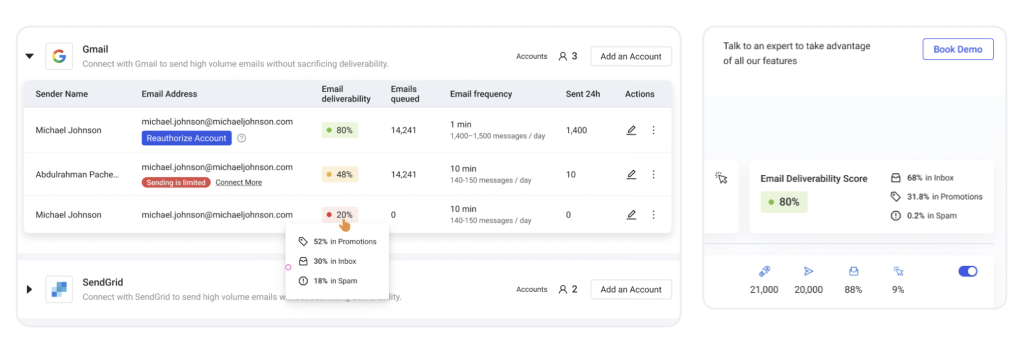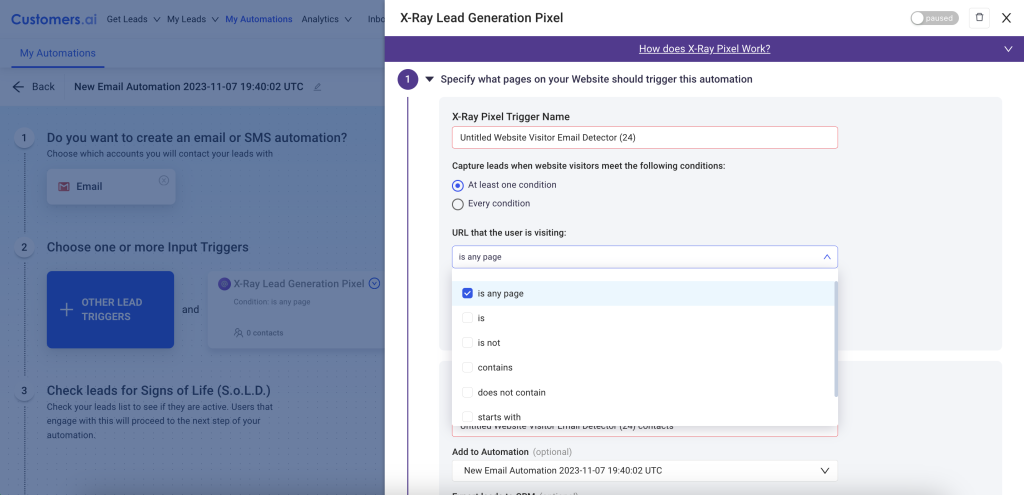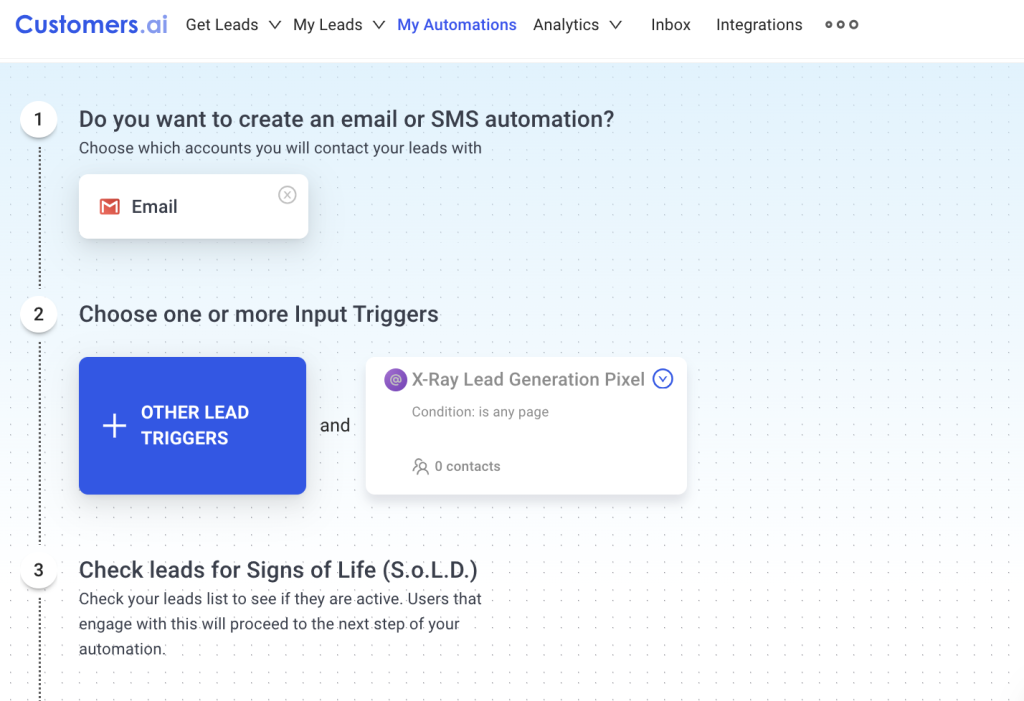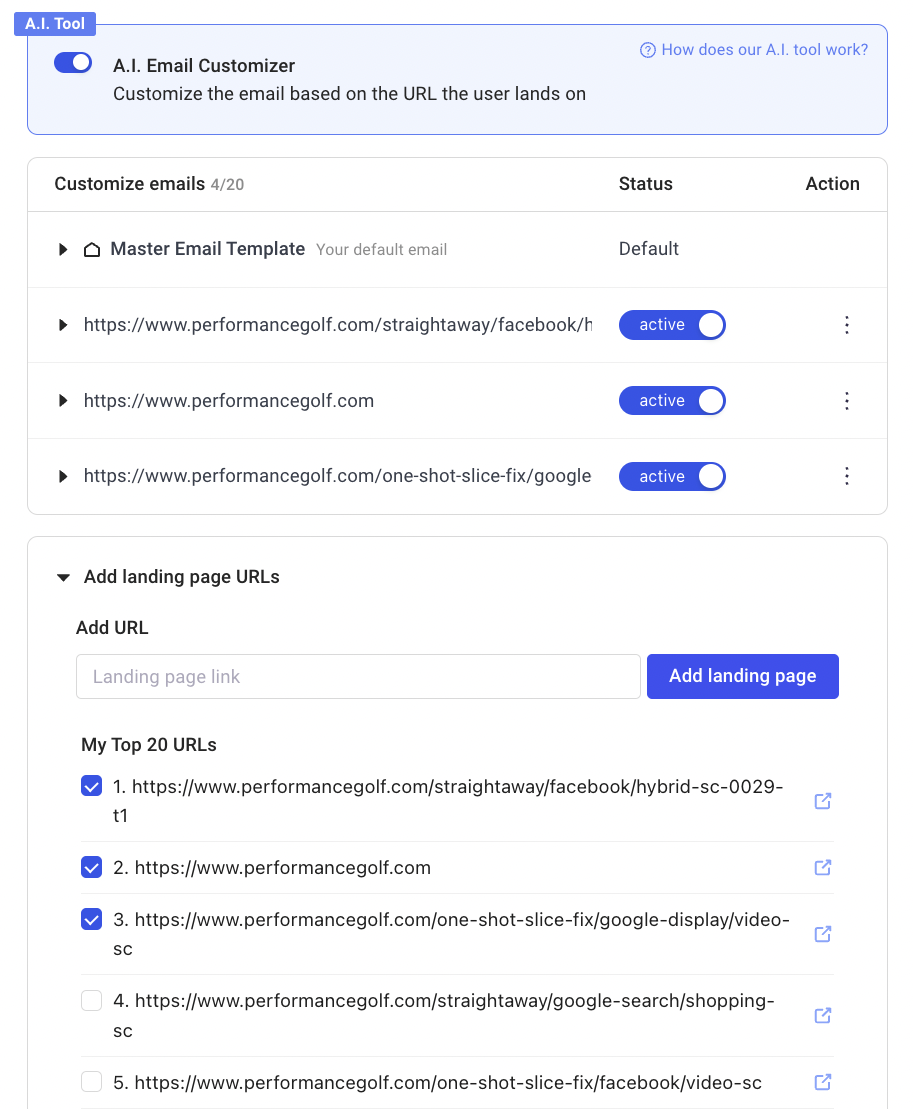The success of email marketing hinges on a fundamental metric: email deliverability. Studies reveal that nearly 20% of emails never reach their intended recipients.
This is pretty troubling for DTC marketers when you consider that the return on investment for email marketing is unmatched.
According to a Data & Marketing Association (DMA) 2019 report, the average ROI for email marketing in the United States was $42 for every dollar spent. Meanwhile, display ads, social media marketing and search advertising return estimates ranging from $2 to $10 returned for every dollar spent.
Mastering the art of ensuring messages land in the inbox is more crucial than ever. The potential for email marketing is hindered when emails languish in spam folders or, worse, go undelivered.
Today I’m going to show you how to improve email deliverability so you can get messages in prospects’ inboxes, run more successful email outreach campaigns, and improve lead generation.
So how can you get emails into the inbox so you can connect with your ideal prospects?
With a strategic approach, an understanding of the email delivery and spam algorithms, and the right email warmup tools, you can run an email outreach process that gets your messages at the top of the inbox and seen by your targeted ideal prospects.
Follow along with this guide to email deliverability:
- What is Email Deliverability?
- Why is Email Deliverability Important to DTC Marketers?
- What is a Good Email Deliverability Rate?
- What Affects Email Deliverability?
- What are Some Emerging Trends in Email Deliverability?
- How do You Ensure Email Deliverability?
- How Can DTC Marketers Increase Email Deliverability Rates?
- How to Increase Email Deliverability Rates with Customers.ai?
- Email Deliverability FAQs
What is Email Deliverability?
Email deliverability measures the rate at which emails get delivered to recipients. Sales and marketing teams use this metric to make sure prospects receive their campaigns successfully.
But deliverability is about more than just if your email arrived or if it bounced back undelivered. It also refers to where your email landed—and whether it went to the inbox or to the spam folder.
Maintaining a high deliverability rate is critical for sales reps who use targeted outbound outreach. With good deliverability, you have a better chance of:
- Building relationships with your target prospects
- Getting prospects to respond to your offer
- Generating and qualifying warm leads
- Closing more deals for your business
- Creating a healthy email account that you can use for future outreach
Convert Website Visitors into Real Contacts!
Identify who is visiting your site with name, email and more. Get 500 contacts for free!
Why is Email Deliverability Important to DTC Marketers?
Email deliverability is crucial for Direct-to-Consumer (DTC) marketers for several reasons:
- Customer Engagement: Email is a primary channel for engaging with customers. Ensuring that emails reach the inbox enables DTC marketers to communicate directly with their audience, providing updates, promotions, and valuable content.
- Brand Visibility: Deliverability impacts the visibility of your brand. If emails consistently land in spam folders, your brand may be overlooked, affecting brand recall and customer trust.
- Campaign Effectiveness: Successful outreach campaigns rely on emails being seen by the intended recipients. Improving deliverability increases the chances of your marketing campaigns reaching the target audience and driving desired actions.
- Conversion Rates: Emails that land in the inbox are more likely to be opened and acted upon. Improved deliverability contributes to higher open rates, click-through rates, and ultimately, better conversion rates for DTC marketers.
- Customer Relationship Building: Email is a personal and direct communication channel. By ensuring emails are delivered, DTC marketers can build and nurture relationships with customers, fostering loyalty and repeat business.
- Regulatory Compliance: Compliance with email marketing regulations, such as GDPR or CAN-SPAM, is crucial for DTC marketers. Good deliverability practices contribute to compliance and help avoid legal issues.
- Data Insights: Reliable deliverability allows marketers to gather accurate data on the performance of their email campaigns. This data is valuable for refining strategies, understanding customer behavior, and optimizing future campaigns.
What is a Good Email Deliverability Rate?
For targeted outbound email outreach campaigns, Customers.ai aims for delivery rates of around 90%. That means the vast majority of emails land in the inbox, while just 10% end up hard or soft bounced or blocked altogether.
Although a 90% deliverability rate is good for targeted outbound emailing, it’s just one factor that defines a successful campaign. It’s also helpful to look at:
- Open rate: the percentage of people who read your messages
- Click rate: the percentage of people who visit links in your messages
- Response rate: the percentage of people who respond to your messages
- Bounce rate: the percentage of emails that return undelivered
- Spam report rate: the percentage of people who file spam complaints with their email provider
What Affects Email Deliverability?
It’s easy to assume your deliverability rate is good, especially if you have a great offer and you’re targeting prospects who are a great fit for your product or service. Yet maintaining a good rate is a constant challenge.

Here are some of the key factors that affect the email deliverability metric:
- Email account age: Did you just set up a new email account yesterday and start sending cold outreach right away? Brand new email addresses have no history, which can trigger spam filters. To warm up a new account, use the tutorial below.
- Sending volume: Are you planning to send hundreds of cold emails per day? New email accounts typically have a limit of about 100 emails per day. If you attempt to send more, you could run into deliverability issues.
- Send times: Did you mass email your entire prospect list at once? Sending all your cold outreach for the day at the same time can compromise deliverability, especially for large sales outreach campaigns.
- Email server type: Are you using a POP3 server or web-based email to run outreach campaigns? Without the right type of email server, your emails could run into problems with inconsistent delivery.
- Email authentication: Have your emails been authenticated? If you aren’t using tools like SPF and DKIM to authenticate your emails, your recipients’ ISPs may think your messages aren’t legitimate.
- Engagement rates: Do your prospects ever open, click on, or respond to your cold emails? If your engagement rates are low, your emails could get flagged as spam—which can impact deliverability.
- Sender reputation: Both IP and domain reputations act as critical factors in email deliverability. A positive sender reputation, significantly influences whether emails reach the intended inbox or get flagged as spam. Maintaining a favorable sender reputation is imperative.
What Are Some Emerging Trends in Email Deliverability?
- AI-Powered Predictive Analytics: As the digital landscape evolves, AI-driven predictive analytics is emerging as a game-changer in email deliverability. Harnessing the power of artificial intelligence, marketers can now anticipate potential deliverability issues before they arise. By analyzing vast datasets, AI identifies patterns, refines targeting strategies, and optimizes content, ensuring messages consistently reach the right audience with precision.
- Interactive Email Experiences: The future of email deliverability lies in interactivity. Marketers are increasingly incorporating dynamic, interactive elements into their emails, transforming static messages into engaging experiences. From clickable carousels to live polls, interactive content not only captivates recipients but also enhances the overall user experience. As ISPs recognize the value of engaged users, emails with interactive elements are more likely to land in the coveted inbox.

- Enhanced Email Authentication Protocols: With cyber threats on the rise, email authentication protocols are evolving to bolster security and trust. DMARC (Domain-based Message Authentication, Reporting, and Conformance) adoption is becoming more widespread, providing an additional layer of protection against phishing and unauthorized use of domains. As ISPs prioritize authenticated emails, adhering to these protocols is integral to maintaining a positive sender reputation.
- Leveraging AI for Personalization: In the era of hyper-personalization, leveraging AI for personalization is a trend reshaping email deliverability. Artificial intelligence not only refines audience segmentation but also dynamically tailors content based on individual preferences and behaviors. As recipients receive more relevant and personalized content, the likelihood of engagement increases, positively impacting deliverability metrics.
- Privacy Compliance and Its Impact on Deliverability: As privacy regulations tighten globally, adherence to compliance standards is emerging as a pivotal factor in email deliverability. Marketers navigating the landscape of data protection laws, such as GDPR and CCPA, are not only ensuring legal compliance but also building trust with their audience. Prioritizing privacy compliance is essential for maintaining a positive sender reputation and fostering a secure email environment.
How Do You Ensure Email Deliverability?
With a smart strategy, you can increase the chance of getting your emails in prospects’ inboxes.
Here are 5 email deliverability tips from Janine Du Toit, Customers.ai Director of Marketing Operations, and resident email deliverability expert:
- Use a SMTP Server: Always use a SMTP server for cold email marketing. She likens SMTP servers to phone books for email domain senders—using one with a good reputation can boost deliverability.
- Moderate Send Volume: Even when you use a SMTP mail server, it’s important to moderate your send volume and your send times. Start your campaign slowly (no more than 100 cold emails per day) and send out emails at intermittent times throughout the day.
- Use Multiple Senders: Use multiple email senders if you plan to launch a larger campaign and need to send more than 100 emails per day.
- Authenticate Your Emails: Don’t forget to authenticate your emails using a DKIM and SPF checker. With these tools, you’ll be able to send emails more reliably and get better inbox placement.
- Generate Engagement! Create cold email campaigns that get opens, clicks, and responses. Every time a prospect opens your email, clicks a link, or responds to your offer, the engagement boosts the health of your email account.
How Can DTC Marketers Increase Email Deliverability Rates?
Embarking on the journey of elevating email deliverability rates is a mission-critical endeavor for DTC marketers. From mastering the art of personalization to optimizing send frequency, the is not just inbox placement, but genuine audience engagement. Here are a few tips for superior email deliverability.
1. Focus on Segmentation and Personalization
Tailoring content for different audiences and incorporating personalized subject lines not only enhances engagement but also lays the foundation for improved deliverability. This can be done in several ways.
- Tailor Content to Different Audiences: In the realm of Direct-to-Consumer (DTC) email marketing, one size rarely fits all. For example, someone looking for a pair of women’s jeans likely doesn’t want to be emailed about a men’s sneaker sale. Implementing audience segmentation allows you to tailor your content based on distinct customer profiles. By understanding the unique preferences and behaviors of different segments, you can craft messages that resonate more deeply, increasing the likelihood of engagement and, consequently, positively impacting deliverability. With Customers.ai, it’s easy to identify which visitors landed on which pages and segment them into specific audiences.
- Personalize Subject Lines: Elevate your email game by embracing the power of personalized subject lines. DTC marketers can significantly enhance open rates by incorporating dynamic content, recipient names, or targeted offers into subject lines. A personalized touch not only captures attention but also signals to recipients that your message is tailored to their interests, bolstering the chances of your emails making it to the inbox.
2. Quality Content and Engagement
In the dynamic landscape of DTC marketing, the value of quality content cannot be overstated. Your email content has to be relevant and it has to be valuable – actively encouraging subscriber interaction. These practices not only captivate your audience but also contribute to a robust sender reputation, fortifying your path to superior email deliverability.
- Create Relevant and Valuable Content: The backbone of any successful email campaign lies in the quality of its content. DTC marketers must prioritize crafting content that is not only relevant but also valuable to their audience. Providing insightful information, exclusive offers, or personalized recommendations ensures that subscribers find genuine value in your emails, fostering a positive sender reputation and bolstering deliverability. Additionally, make sure it’s personalized! With a tool like the Customers.ai AI writer, you can create something that is not only interesting but also completely relevant! Check out how it works:
- Encourage Subscriber Interaction: Boosting subscriber interaction is a strategic move towards improved deliverability. DTC marketers can implement engagement-driving elements such as clickable calls-to-action, surveys, or interactive content. When recipients actively engage with your emails, it sends positive signals to ISPs, reinforcing your sender reputation and increasing the chances of future messages reaching the inbox.
- Leverage User-Generated Content: Harness the power of your community by incorporating user-generated content into your emails. DTC marketers can enhance authenticity and engagement by showcasing real customer experiences. UGC not only adds a personal touch to your emails but also contributes positively to your sender reputation.
3. Optimize Send Frequency and Timing
Mastering the art of email timing is a game-changer in the dynamic landscape of DTC marketing. Your email frequency and send times play a crucial role in captivating your audience without overwhelming them. Striking the perfect balance ensures that your messages are not only noticed but also engaged with, contributing to improved deliverability.
- Find the Sweet Spot for Send Frequency: DTC marketers must navigate the delicate balance between staying top-of-mind and avoiding email fatigue. Experiment with different send frequencies to identify the optimal cadence for your audience segments. By tailoring your approach to subscriber preferences, you not only enhance engagement but also solidify your position in their inbox.
- Perfect Your Timing with Analytics: Leverage analytics tools to decipher the ideal moments for sending emails to different segments of your audience. By understanding when your subscribers are most active, you can strategically time your campaigns, maximizing the chances of inbox visibility and interaction.
Optimizing your send frequency and timing is a nuanced process that requires continuous refinement but is super important to email deliverability success.
4. Maintain a Clean and Updated Subscriber List
In the dynamic world of DTC email marketing, a clean and updated subscriber list is a must. Ensuring your list is pristine not only enhances the relevance of your campaigns but also prevents potential deliverability pitfalls.
- Regular List Purge for Peak Performance: DTC marketers, take note—regularly auditing and purging your subscriber list is a proactive step toward optimal deliverability. Identify and remove inactive or disengaged subscribers to maintain a list populated with genuinely interested recipients. This meticulous curation not only improves open rates but also signals to ISPs that your content is eagerly anticipated.
- Update Contacts to Stay Relevant: The key to a thriving DTC email strategy lies in relevance. Regularly update subscriber details to reflect changes in preferences, ensuring your campaigns remain aligned with evolving customer needs. By keeping your contact information current, you not only minimize bounce rates but also foster a positive sender reputation.
- Embrace Automation for Efficiency: Streamline list maintenance with automation tools that effortlessly manage subscriber updates and removals. Automation not only saves time but also ensures your list is consistently refined, allowing you to focus on delivering content that truly resonates with your engaged audience.
5. Monitor and Address Deliverability Issues Promptly
Vigilance is the linchpin of successful email deliverability in the world of DTC marketing. Proactive monitoring and swift resolution of deliverability issues are paramount to maintaining a pristine sender reputation and ensuring your messages consistently reach the intended audience.
- Regularly Assess Key Metrics: DTC marketers, make it a habit to regularly assess critical deliverability metrics. Keep a close eye on bounce rates, spam complaints, and open rates to detect any anomalies. By identifying issues early on, you can address them swiftly, preventing potential setbacks to your sender reputation.
- Investigate Bounces and Complaints: Bounces and spam complaints are red flags that demand immediate attention. Dive deep into the reasons behind bounces and proactively investigate spam complaints. Understanding the root causes allows you to rectify issues promptly, demonstrating to ISPs that you are committed to delivering valuable, solicited content.
- Utilize Email Authentication Protocols: Implement and regularly review email authentication protocols like SPF, DKIM, and DMARC. These protocols not only enhance email security but also contribute to better deliverability. Regular checks ensure that your emails are not only reaching inboxes but are also protected from phishing attempts and unauthorized use of your domain.
The journey to increased deliverability rates is an ongoing commitment. By integrating personalized strategies, maintaining a clean subscriber list, and promptly addressing issues, DTC marketers can forge a path to sustained success.
How to Increase Email Deliverability Rates with Customers.ai
Improving email deliverability doesn’t have to be as difficult as you might think. With Customers.ai’s email warmup tools, you can automatically improve deliverability and avoid bounced emails as you send cold outreach campaigns.
Here’s a 3-step process to increase email deliverability to 90% using Customers.ai Website Visitor ID X-Ray tool and AI Email Writer to create targeted outbound emails to a warm audience:
- Start Collecting Email Addresses
- Set Up Your Email Automation
- Warm Up Your Email Accounts
Step #1: Start Collecting Email Addresses
The first step is adding the Customers.ai Website Visitor X-Ray ID Pixel. In 90 seconds, you can start collecting the email addresses of the people who visit your website. Turn anonymous visitors into a warm audience you can use! The Website Visitor ID X-Ray is easy to add – we have several ways to install it including GTM, Shopify, WordPress, and more.
In the dashboard, navigate to My Automations, select + New Automation, and get your pixel. Make sure to test it to verify it’s working.

Step #2: Set Up Your Email Automation
Once you have the X-Ray pixel working and have connected your email, you can start setting up automations to target this particular audience. On your Customers.ai dashboard, click the + Automation button in the main menu, and select X-Ray Lead Generation Pixel.

For enhanced targeting, you can create both automations and emails by landing page.

Step #3: Warm Up Your Email Accounts
It’s important to remember that your X-Ray list is not cold. These are actual users who have visited your site. To help with deliverability, Customers.ai will automatically detect if an email is active, ensuring you are not wasting email sends or seeing a high number of bounces.
Once you have your automation set up and your email configured, you can start sending!

Boost Email Deliverability With the Website Visitor ID X-Ray Pixel
Hear that? It’s the sound of your emails landing in inboxes and getting responses from your target prospects.
With Customers.ai’s Website Visitor ID X-Ray tool and our email warmup capabilities, your team can generate more revenue.
Curious how these tools can benefit your cold outreach efforts? Get started now with a free trial of Customers.ai.
Important Next Steps
- See what targeted outbound marketing is all about. Capture and engage your first 500 website visitor leads with Customers.ai X-Ray website visitor identification for free.
- Talk and learn about sales outreach automation with other growth enthusiasts. Join Customers.ai Island, our Facebook group of 40K marketers and entrepreneurs who are ready to support you.
- Advance your marketing performance with Sales Outreach School, a free tutorial and training area for sales pros and marketers.
Convert Website Visitors into Real Contacts!
Identify who is visiting your site with name, email and more. Get 500 contacts for free!
Email Deliverability FAQs
Q. What factors affect email deliverability?
Email deliverability is influenced by various factors, including sender reputation, content quality, engagement rates, authentication protocols (SPF, DKIM, DMARC), and list hygiene.
Q. How can I improve my email deliverability?
Focus on maintaining a positive sender reputation, sending relevant content, engaging with your audience, authenticating your emails using SPF, DKIM, and DMARC, and regularly cleaning your email list to remove inactive or bouncing addresses.
Q. Why are my emails going to the spam folder?
Emails can land in the spam folder due to poor sender reputation, spammy content, low engagement, or insufficient authentication. Ensure your emails comply with best practices and monitor your sender reputation.
Q. What is sender reputation, and how is it measured?
Sender reputation is a score assigned to a sender’s domain or IP address based on factors like email engagement, spam complaints, and bounce rates. Internet Service Providers (ISPs) use this score to determine whether to deliver an email to the inbox or mark it as spam.
Q. What role does customer engagement play in DTC email deliverability?
DTC brands heavily rely on customer engagement. High engagement rates, such as opens, clicks, and purchases, contribute positively to sender reputation, enhancing the chances of DTC emails reaching the inbox.
Q. How can DTC brands personalize emails without compromising deliverability?
Personalization is key for DTC marketing. Ensure you have clean and segmented lists, use dynamic content based on customer preferences, and avoid excessive personalization that might trigger spam filters.
Q. How should DTC marketers handle re-engagement campaigns to maintain email deliverability?
Implement re-engagement campaigns to win back inactive subscribers. Clearly communicate the value proposition, offer incentives, and, if necessary, provide an easy way for subscribers to opt-out to maintain list hygiene.
Q. What steps can DTC marketers take to avoid spam traps and maintain a clean email list?
Regularly clean your email list by removing inactive or bouncing addresses. Use confirmed opt-ins and monitor engagement metrics. Avoid purchasing email lists, as they may contain spam traps, and implement double opt-in processes to verify subscriber intent. Regularly update your list hygiene practices to align with industry standards.
Q. What role does a sender’s reputation play in email deliverability, and how can it impact overall email deliverability rates?
A sender’s reputation is a crucial factor in email deliverability. It is a measure of the sender’s trustworthiness based on their sending history. A positive reputation enhances email deliverability, ensuring that emails land in the inbox rather than being flagged as spam.
Q. What are the common challenges faced by marketers in maintaining high email deliverability, and how can they overcome these challenges?
Marketers often face challenges in maintaining high email deliverability due to factors such as changing ISP algorithms, evolving spam filters, and subscriber engagement fluctuations. Overcoming these challenges involves staying updated on industry best practices, regularly monitoring and adjusting sending strategies, and maintaining a clean and engaged email list.
Q. What impact does the quality of email content have on email deliverability?
The quality of email content significantly influences email deliverability. Marketers should create relevant, engaging, and non-spammy content. Avoiding trigger words, optimizing HTML code, and personalizing content based on subscriber preferences are best practices that contribute to improved email deliverability.
Q. How can DTC marketers identify and prevent issues that may hurt email deliverability?
Proactively monitor metrics like bounce rates and spam complaints. Address issues promptly, remove inactive subscribers, and stay compliant with regulations.
Q. How do email deliverability rates impact the success of an email marketing campaign?
Deliverability rates directly impact campaign success. Improve rates with audience segmentation, personalized content, optimal send times, and regular list maintenance.
Q. What are the consequences of neglecting efforts to improve email deliverability?
Neglecting efforts can result in spam marking and damage to reputation. Prioritize ongoing education, invest in tools, and allocate resources for list maintenance and compliance.
